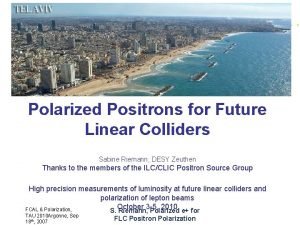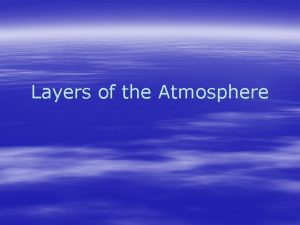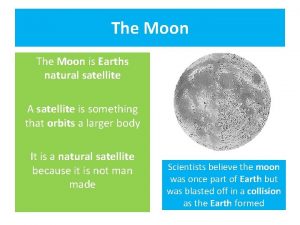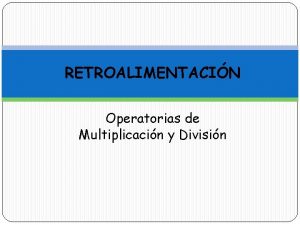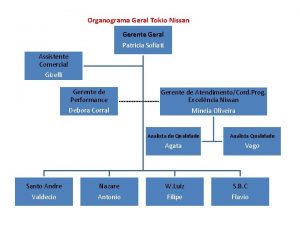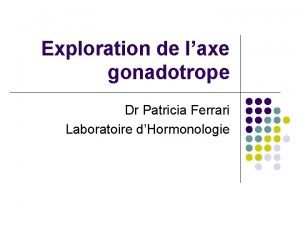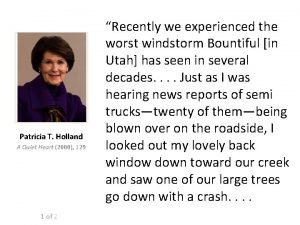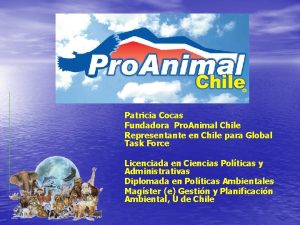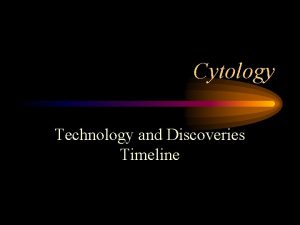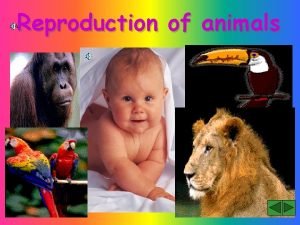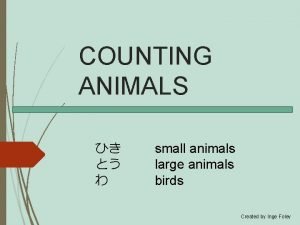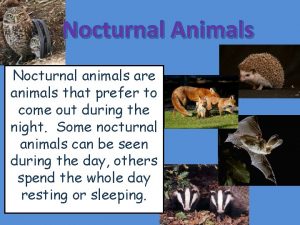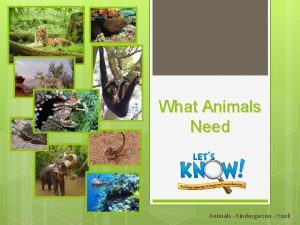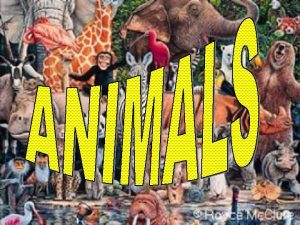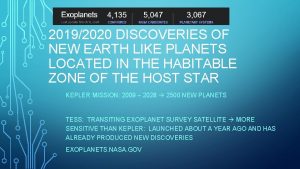THE FIRST ANIMALS ON EARTH new discoveries Patricia
























































































- Slides: 88

“THE FIRST ANIMALS ON EARTH – new discoveries” Patricia Vickers-Rich School of Geosciences, Monash University, Melbourne, Australia Paleontological Institute, Russian Academy of Sciences, Moscow




WHAT IS AN ANIMAL (METAZOAN)? ALL ARE MULTICELLULAR so, single-celled life forms (Protozoa) do not qualify ALMOST ALL ARE MOBILE at some stage in their life, animals move

WHAT IS AN ANIMAL (METAZOAN)? ALL ARE HETEROTROPHIC - animals are consumers - animals are not able to generate their own food - some have, however, cooperated with other species in symbiotic associations that can make their own food (algae in corals, for example)

WHAT IS A METAZOAN? • Most are DIPLOID ORGANISMS diploid = having two sets of chromosomes, one from each “parent” (leading to much greater biodiversity with each generation)



WHERE ARE THE OLDEST ANIMALIA FOUND? • ? Glacier National Park, Montana, USA (@1. 5 billion years) • Doushantuo, Yangtze Gorges, China (@580 million, perhaps older) • Newfoundland (575 +/- 1 million) • Saudi Arabia – new discoveries (569. 0 +/- 3. 0 million) White Sea Region, Russia (555. 3 +/-0. 65 to 551. 1 +/- 0. 7 million) • Flinders Ranges, South Australia – dating controversial • Namibia, Southwest Africa (547. 32+/- 0. 65 to 542. 68 +/- 1. 25 million)






Small fossils are some of the oldest animals – from China. Small phosphatized embryos and adult fossils from the Doushantuo Formation in China record metazoans from 580 million years.





NEWFOUNDLAND The first really big animals (@575 +/- 1 Ma) • Oldest Truly Macro-Ediacara Biota (Mistaken Point) Dominated by Rangeomorphs, whose relationships are not understood? • Deep Water Setting • Excellent Dating Possible Because of Ashes





THE VENDIAN FAUNAS OF THE WHITE SEA REGION, NORTHERN RUSSIA • AGE: over 551 -555 or older million years, U-Pb radiometric dating of zircon crystals from volcanic ash beds • LOCATION: about 1000 km north from Moscow, S-SE coast of the White Sea


• FOSSIL SITES: within 400 km from Onega River to the Winter Coast of the White Sea • FIELD CONDITIONS: swamps and taiga, short and cold summer, mosquitoes, midges, bears • ACCOMODATION: tents • ROCKS: sandstone, siltstone and claystone deposited in shelf or slope marine environments












• FOSSILIFEROUS BEDS: clay/sand interface, storm beds (downslope avalanches) • FOSSIL TYPES: body fossils and trace fossils (trails, tracks and burrows) • PRESERVATION MODE: imprints, 3 D casts and moulds, pyrite crust (“death masks”), organic material

• PRESERVATION DETAILS: external and internal morphology • SIZE: Range from tiny to large: 2 -3 mm to 1 meter • PALEOECOLOGY: shallow to deeper marine habitats, relatively cold oceans, abundant plankton and benthic microbial mats










EDIACARAN BIOTA OF AUSTRALIA • Coarse-grained Nature , so Preservation not as Detailed as in White Sea or Siberia • High Biodiversity • Situated Near Equator









NAMIBIAN FAUNA (542. 68 +/- 1. 25 to 547. 32 +/- 0. 65 Ma) • Some of Youngest of these first animals - Ediacara Animals • Possibilities of Precise Dating Due to Abundance of Ashes • Dominated by Pteridinids • Preservation Exquisite















THE CAMBRIAN EXPLOSION? • Rapid Appearance of Hard Skeletons (but over time - from the Early to Middle Cambrian) • Appearance of New Body Plans • Was the Cambrian Explosion Abrupt or Gradual? • Body Impressions or Skeletons/Shells • Trace Fossils • Molecular













 Sabine riemann
Sabine riemann Stonehenge
Stonehenge James prescott joule education
James prescott joule education Methods to avoid false discoveries in data mining
Methods to avoid false discoveries in data mining Chapter 16 toward a new heaven and a new earth
Chapter 16 toward a new heaven and a new earth Https://a-z-animals.com
Https://a-z-animals.com Is a horse a producer consumer or decomposer
Is a horse a producer consumer or decomposer Parasitic food chain
Parasitic food chain Animals that eat both plants and animals
Animals that eat both plants and animals Plants and animals on earth grade 5
Plants and animals on earth grade 5 Earth day poster project
Earth day poster project Hát kết hợp bộ gõ cơ thể
Hát kết hợp bộ gõ cơ thể Lp html
Lp html Bổ thể
Bổ thể Tỉ lệ cơ thể trẻ em
Tỉ lệ cơ thể trẻ em Chó sói
Chó sói Tư thế worm breton
Tư thế worm breton Chúa yêu trần thế alleluia
Chúa yêu trần thế alleluia Kể tên các môn thể thao
Kể tên các môn thể thao Thế nào là hệ số cao nhất
Thế nào là hệ số cao nhất Các châu lục và đại dương trên thế giới
Các châu lục và đại dương trên thế giới Công thức tính thế năng
Công thức tính thế năng Trời xanh đây là của chúng ta thể thơ
Trời xanh đây là của chúng ta thể thơ Mật thư anh em như thể tay chân
Mật thư anh em như thể tay chân Phép trừ bù
Phép trừ bù độ dài liên kết
độ dài liên kết Các châu lục và đại dương trên thế giới
Các châu lục và đại dương trên thế giới Thể thơ truyền thống
Thể thơ truyền thống Quá trình desamine hóa có thể tạo ra
Quá trình desamine hóa có thể tạo ra Một số thể thơ truyền thống
Một số thể thơ truyền thống Cái miệng nó xinh thế chỉ nói điều hay thôi
Cái miệng nó xinh thế chỉ nói điều hay thôi Vẽ hình chiếu vuông góc của vật thể sau
Vẽ hình chiếu vuông góc của vật thể sau Thế nào là sự mỏi cơ
Thế nào là sự mỏi cơ đặc điểm cơ thể của người tối cổ
đặc điểm cơ thể của người tối cổ Thế nào là giọng cùng tên? *
Thế nào là giọng cùng tên? * Vẽ hình chiếu đứng bằng cạnh của vật thể
Vẽ hình chiếu đứng bằng cạnh của vật thể Tia chieu sa te
Tia chieu sa te Thẻ vin
Thẻ vin đại từ thay thế
đại từ thay thế điện thế nghỉ
điện thế nghỉ Tư thế ngồi viết
Tư thế ngồi viết Diễn thế sinh thái là
Diễn thế sinh thái là Dot
Dot Bảng số nguyên tố lớn hơn 1000
Bảng số nguyên tố lớn hơn 1000 Tư thế ngồi viết
Tư thế ngồi viết Lời thề hippocrates
Lời thề hippocrates Thiếu nhi thế giới liên hoan
Thiếu nhi thế giới liên hoan ưu thế lai là gì
ưu thế lai là gì Sự nuôi và dạy con của hươu
Sự nuôi và dạy con của hươu Khi nào hổ con có thể sống độc lập
Khi nào hổ con có thể sống độc lập Sơ đồ cơ thể người
Sơ đồ cơ thể người Từ ngữ thể hiện lòng nhân hậu
Từ ngữ thể hiện lòng nhân hậu Thế nào là mạng điện lắp đặt kiểu nổi
Thế nào là mạng điện lắp đặt kiểu nổi First layer of atmosphere
First layer of atmosphere First humans
First humans New moon position of sun and earth
New moon position of sun and earth Patricia necesita colocar 96 libros en cajas
Patricia necesita colocar 96 libros en cajas Patricia rinwigati
Patricia rinwigati Patricia and patrix
Patricia and patrix Patricia va a california chapter 6
Patricia va a california chapter 6 Taylor blackmon
Taylor blackmon Patricia polacco facts
Patricia polacco facts Patricia deverka
Patricia deverka Nurse novice to expert
Nurse novice to expert Patricia marszal
Patricia marszal Patricia sofiati
Patricia sofiati Patricia benner from novice to expert
Patricia benner from novice to expert Glenn fagan
Glenn fagan Musée limonade sauterelle
Musée limonade sauterelle Patrix patricia manual
Patrix patricia manual Patricia rinwigati waagstein
Patricia rinwigati waagstein Dr patricia ferrari
Dr patricia ferrari Patricia postigo
Patricia postigo Pamela arenas
Pamela arenas Yesterday poem by patricia pogson analysis
Yesterday poem by patricia pogson analysis Patricia castillo sex
Patricia castillo sex Ciclo vital individual y familiar
Ciclo vital individual y familiar çerçeve direktif nedir
çerçeve direktif nedir Patricia joran nude
Patricia joran nude Patricia place ses 24 pions sur une grille
Patricia place ses 24 pions sur une grille Patricia va a california summary
Patricia va a california summary Patricia t. holland
Patricia t. holland Patricia rivera pérez
Patricia rivera pérez Patricia polacco family tree
Patricia polacco family tree Patricia palacios mackay
Patricia palacios mackay Patricia lancaster
Patricia lancaster Where was patricia grace born
Where was patricia grace born Patricia cocas
Patricia cocas Patrizia benner
Patrizia benner
